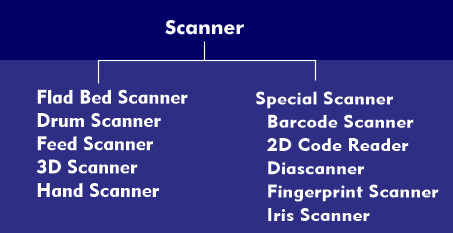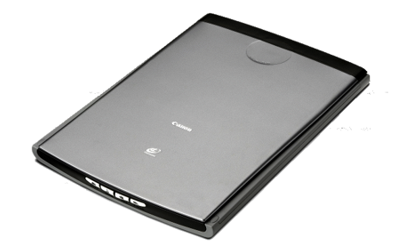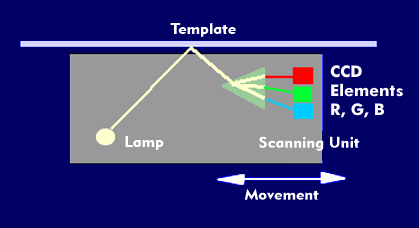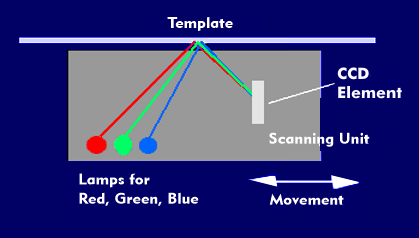scanner
Hardware scanners are electronic devices for scanning and digitizing two- and three-dimensional originals. For this purpose, the scanners scan the inserted original line-by-line and pixel-by-pixel via light reflection and digitize the individual pixels according to the RGB color model.
Scanners can scan graphic originals, documents or even text originals. Further processing of the texts is possible via optical character recognition with OCR software.
In addition to the scanning software, some scanners have calibration software and test panels with color patches according to the IT8 color reference. This ensures that colors are captured as consistently and faithfully as possible. The color patches for calibration vary from manufacturer to manufacturer, but they always contain the primary and secondary colors and some problematic mixed colors.
Construction forms of scanners
Scanners are available in a wide variety of designs and sizes as desktop and handheld devices or as scanner systems. In general, there are scanners as flatbed scanners with and without automatic document feeder( ADF), as scanners in multifunctional devices, as transmitted light scanners, slide scanners, photo scanners, film scanners, document scanners, drum scanners, handheld scanners or 3D scanners.
Method of scanners
In terms of the type of scanning, a distinction is made between reflective processes and transilluminant processes, such as those used in slide sc anners for scanning slides and negatives.
Scanners with reflective processes work with light reflection. In this process, the original is illuminated by a light source such as a row of light-emitting diodes. The light reflected from the original is focused line by line via mirror, filter and lens systems onto a light-sensitive CCD or Contact ImageSensor( CIS). The color information is digitized and transferred to a computer for further processing. The color information for the three primary colors can be obtained in different ways: Via color filters that break down the reflected white light into its primary colors, via a prism technique that performs the color separation, or via fluorescent lamps that already irradiate the original with the three primary colors. The first method requires the original to be scanned three times, once for each primary color. This process is also known as the three-pass process. In the single-pass process, on the other hand, the original is scanned only once, which means that the scanning process takes only one- third of the time.
Characteristics of scanners
The vertical resolution of a scanner depends on the step size of the scanning device, the horizontal resolution on the resolution of the CCD sensor. The values for the resolution differ very strongly depending on the application and the used technology. For example, scanners with resolutions of around 600 dpi are used for non-critical office applications, while resolution values of 2,400 dpi are certainly achieved for professional applications in the layout, photo and printing industries. The color depth for simple scanners is 8 bits to 10 bits, for professional applications 24 bits and even 48 bits, which corresponds to True Color and Deep Color.
Data can be transferred from the scanner to the personal computer( PC) via the Picture Transfer Protocol( PTP), the TWAIN interface or via Windows Image Acquisition( WIA). However, there are also scanners with parallel interface, SCSI or USB interface.




